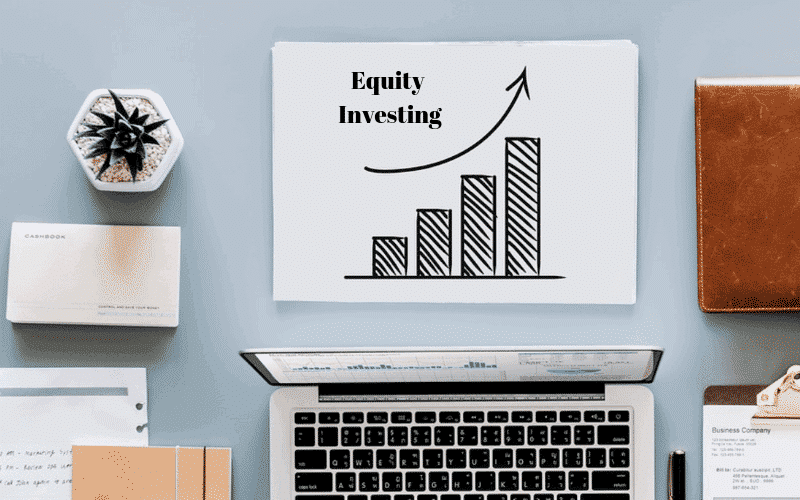Glad you asked that question. Talking averages are always tricky when you are talking about lumpy numbers. The average stock market return is the percentage change in the stock market value for one year or a period of years.
Historically, the average stock market return has been roughly 10%, before inflation, annually, from the S&P 500 inception in 1926 to 2020. However, returns each year are far from the average, and the 10% average stock market return rarely happens in a one-year performance.
Instead, the average encompasses lumpiness that reflects the higher and lower rates recorded each year. That 10% average return is misleading due to the remarkable amount of past and future volatility.
Investors cannot count on 10% consistent annual growth in any one year, and if we could, it would not be a risky market. However, over the past 95 years, most returns have fallen in 10%-20% positive returns, while there have been very few years with 40% gains or losses.
Be aware that the 10% growth is before expected inflation of 2%-3% per year. The actual average stock market return to 7%-8% after adjusting for inflation. We will talk about inflation later on.
The Stock Market Fluctuates
The shorter your timeframe, the greater the market volatility investors will face. Daily, prices can gyrate wildly with 24-hour financial news chatter you should ignore. Many of the talking heads react to minute updates that often sensationalize blips in the stock markets from arcane and sometimes meaningless information and create anxiety, or worse, mania.
Many short-term events become non-events over the long-term but may cause investors to panic to sell their best positions at the market bottom.
Measuring Stock Market Returns And Why S&P 500 Matters
There are several securities indexes that investors pay attention to and use in their analysis. A securities market index is an indicator of market performance, measuring the average value of several securities chosen as a sample to reflect how the market is doing.
The S&P 500 composite index is the most widely accepted benchmark of the stock market returns of experienced investors, analysts, and portfolio managers, but the media tends to focus on the Dow.
The S&P 500 composite index is a broader market benchmark, tracking 500 stocks of large, established companies. The index includes 400 industrial firms, 40 financial institutions, 40 public utilities, and 20 transportation companies. Although there are thousands more stocks trading on the US stock exchanges, the S&P makes up about 80% of the entire stock market value on its own, making it a valuable proxy for the performance of the stock market as a whole.
The Dow Jones Industrial Average (DJIA or Dow) has been around the longest (1896) and remains a popular index and provides attention-grabbing headlines. However, this index reflects only 30 actively traded blue-chip stocks, including well-known large companies. Many find this index to have an inadequate representation of the overall market performance.
There are additional securities market indexes investors will use for different categories. The Russell 2,000 Index is a small-cap index of relatively small capitalized companies. The NASDAQ Composite Index considers all over-the-counter stocks (over 3,000) that trade in the over-the-counter market. The Dow-Jones Wilshire 5,000 Index is a market capitalization-weighted index of the market value of all the stocks actively traded in the US.
Take A Long Term View of The Market
You have a better chance of attaining a 10% average stock market return when you take on a long-term view. Warren Buffett said, “I never attempt to make money on the stock market. I buy on the assumption that they close the market the next day and not reopen it for five years.”
The market can be volatile daily due to short-term events, government closing, market sentiment changes, speeches byFed members, economic changes, and temporary news.
Bull Markets, Bear Markets, And Market Corrections
Long-term investors understand that the market is subject to dramatic swings in the market. Since 1871, the stock market has spent 40% of all years rising or falling more than 20%. Thus booms and busts are normal.
A bear market is a decline in value by 20% or more in a stock index from previous highs as economic conditions are weakening. Bull markets reflect a rise of 20% or more in prices, powered by a strong economy.
Stock market corrections are declines of at least 10% and are more frequent than bear markets. Corrections can last only days or months and can be positive when it adjusts overvalued assets from questionable exuberance in the market, providing buying opportunities.
Unique Market Volatility At The Onset of The Pandemic
The stock market turbulence at the onset of the pandemic was unique. The longest bull market started at the Great Recession’s bottom in March 2009 through the S&P 500 index peak at $3,386.15 on February 19, 2020. From that peak, the market quickly bottomed on March 23, 2020. This swift 33.9% decline from the market decline marked the transition from a longstanding bull market to a very short-lived bear market of 33 days. Bear markets average 13 months.
Market volatility in March 2020 was unprecedented, with 18 market jumps of greater than 2.5% in 22 trading days. From March 23, 2020, through October 1, 2021, the S&P 500 rose a spectacular 94.7%! Did anyone time that market? Good for you if you did, but market timing is very challenging.
Average Stock Market Returns – Arithmetic and Geometric Means
It is essential to understand that there are several ways to calculate stock market returns. Yes, that means doing some math, but it won’t be painful.
For simplicity, we are not adjusting for inflation just yet. We will compare the more straightforward arithmetic mean to the geometric mean, better known as the annualized return, which produces the more precise compound annual growth rate or CAGR. (To be honest, the term “geometric” brings back memories of middle school geometry and how poorly I performed as a student.).
For the arithmetic mean or simple averaging of the market return for an individual stock or the S&P 500, you would add the returns and divide that total by the number of returns.
For the past five years, this market index (or stock) had a 9.2% average return as follows:
5.2% + 10.3% +15.3% + 6.9% +8.1%= Sum of returns then divided by 5 years= 9.2%
Investors should know that every financial advisor will remind their clients, “Past performance is not reflective of future results.”
Average market returns get a bit funky when you add negative returns. For example, if you calculate two years that produced 100% return in year one and lost 50% return in year two, mathematically, you would get a 25% return, but that does not make sense. Using real numbers, where you bought a stock for $25 per share that doubled to $50 for 100% return, then it declined 50% or halved in year 2, you would be back at the original purchase of $25 per share.
The arithmetic mean is not the same as the geometric mean, better known as the annualized return or CAGR, reflecting compounding.
As an avid reader of Warren Buffett’s annual letter to Berkshire Hathaway’s shareholders, we can look at Berkshire’s annualized return of 20% for 1965-2020. Berkshire Hathaway CAGR was about twice the rate of the market.
We can use the Moneychimp calculator for the annualized growth rate of the S&P 500, including dividends, for 10.23%. The annualized is typically below the average return, which was 11.62% for the 35-year timeframe.
Inflation Adjustments To The Market Average Returns
When we adjust for 4% inflation for 1965 to 2020, the annualized return drops to 6.13% (from 10.23%), and the average return declines to 7.56% (from 11.62%). While inflation has been relatively tame below the 2% Fed target in the past ten years, the 1970s and 1980s were periods of high inflation years. That means that consumers’ purchasing power dropped as prices of goods and services rose.
Investors should always have a working knowledge of the relationship between the stock market and the economy and how the Federal Reserve implements monetary policy to help cure economic problems like high unemployment and high inflation.
There have been growing concerns about higher inflation lingering into 2022, despite Fed Chairman Jay Powell referring to inflation as transitory. We have continued to experience broad supply constraints for many goods since the onset of the pandemic. Historically, stocks returns tend to outpace inflation more than other asset classes.
Our Formula For Successful Investing
1. Buy and Hold Investing Strategy
Long-term investors with buy-hold strategies recognize that there are bull markets, bear markets, and market corrections. They tend to stay the course when the markets become volatile and may become opportunistic if they have some cash to buy beaten-down names in their portfolio and at bargain levels.
In an average year, the price of a typical stock fluctuates up or down. We have seen overall stock market prices fall or rise 3, 4, or 5 percent in a single day in recent years. When you have a long-term perspective, it is easier to accept and ignore such volatility.
Investors may periodically trim positions that have grown out of proportion to the rest of their portfolio despite typically holding their positions.
Investors who primarily hold on to their positions with intermittent buying or selling are not traders with shorter timeframes and avoid making mistakes from emotional pressures. Also, they typically won’t borrow funds to invest and face potential margin calls.
The benefits of long-term investing provide investors with tax advantages on capital gains and reduced transaction costs from active trading.
2. Dollar-Cost Averaging
Dollar-cost averaging is a systemic way of investing equal sums of money at regular intervals (usually every month) regardless of the investment’s price. That means you are investing the same fixed dollar amount, such as $300 in the same stock or mutual fund, over a long time.
Since investments generally increase in price more than the decline, the averaging means that you purchase more shares when the price is down and fewer shares when the price is high and at below-average costs.
The benefits of dollar-cost averaging are that you are avoiding the responsibility and the decision-making of timing your purchases which can be stressful. It ignores the outside events that may cause noise and short-term stock swings, providing the long-term investment approach.
Those who opt-in to employer-sponsored 401K retirement plans use dollar-cost averaging when automatic contributions come from their monthly paychecks. Retirement investors do not fear the market fluctuations when they have a longer time horizon.
3. Avoid Market Timing
Those who practice market timing attempt to predict the short-term movements of various markets, and based on predictions, move assets around to capture market gains and avoid market losses. They try to outguess the trend of stock prices based on economic news or company earnings releases.
Sometimes you don’t know enough from reading company releases ahead of the management conference calls that may help to clarify the earnings forecast and the stock corrects immediately. The speed at which new information is reflected in investment prices is far more efficient than humans think.
As an analyst, I made quick judgments on the morning call on a specific company earnings release. Later, after management provided far greater color on earnings, I would add to my earlier comments, sometimes changing my perspective. That would upset the profit and loss of the traders as the stock price would adjust to the new information the company shared.
Market timing would be a desirable skill if one could consistently buy at the bottom and sell at the top. Value investors will look for bargains reflected in low price-earnings ratios or sell when valuations look too rich and may be time for a correction in that stock. As we said early, market timing is very challenging.
4. Portfolio Diversification
A diversified portfolio is an essential strategy that can help reduce market volatility. Concentration in any one stock, industry, or asset class is a hazardous strategy. Portfolio diversification selects different asset classes (e.g., stocks, bonds, mutual funds, real estate, and cash) for potential returns and various risk-return traits.
Long-term stock investors can achieve stock diversification through individual stock picking or buying mutual funds and ETFs.
5. Be Careful About Fees
The latter may generate fees based on the mutual fund expense ratio that reduces your returns. The expense ratio refers to the annual fund expenses, expressed as a percentage of assets under management (AUM).
The higher the expense ratio, the lower the return. The expense ratios are clearly stated, usually under headings that say “shareholder fees” or in the online prospectus. You can evaluate these fees charged by mutual funds or exchange-traded funds (ETFs) by their respective category. The average expense ratio of an index fund is typically below the fee for the actively managed equity fund, which may have similar proportionate equity holdings.
Many index funds track the performance of an index such as the S&P 500. They have relatively low expense ratios, low minimum and provide excellent diversification. Diversification reduces your volatility while evening out your returns.
Under its founder John Bogle, Vanguard spearheaded index investing and remains the leader in index funds. Their index funds are among the best, like the S&P 500 ETF, VOO, with a 0.03% expense ratio. Bogle once said, “Index funds eliminate the risks of individual stocks, market sectors, and manager selection. Only stock market risk remains.”
6. Asset Allocation and Rebalancing
Asset allocation is a form of diversification in which investors decide on the proportions of various assets that will be part of an investment portfolio. Typically, asset allocation will contain investment choices that best reflect your age, income, goals, risk tolerance, financial resources, lifestyle, and investment time horizon.
A rule for asset allocation is the 120 rule of thumb, which helps determine what percentage you should invest in equities versus bonds and cash. For example, You can find the percent to invest in equities by subtracting your age from 120. If you are 30 years old, the calculation is 120 minus 30= 90; you would put 90% in equities and the remaining 10% in bonds and cash. Every year or periodically, you would be rebalancing your portfolio as needed.
Investment choices are equities (stocks and stock funds), bonds, real estate, and cash or cash equivalents. Cash availability is essential for taking advantage of downturns so you can put more money into stocks. Rebalancing different asset classes in your portfolio is vital to do about once a year to maintain the risk levels you want to have in your portfolio and relative to your age.
7. Risk Tolerance
Your risk tolerance is your willingness to weather changes in the value of your investments. You need to factor your risk tolerance into your investment strategy, recognizing how much risk you can handle. Risk and return are positively correlated, meaning the higher the risk you assume, the higher the returns you should receive as compensation. If you lose sleep over your investments, it may be time to reduce your risk and adjust your investing philosophy.
Risk tolerance varies, and age plays a significant role. The younger you are, the more risk you can take on as you have more time to ride out market fluctuations. The closer you are to retirement age, the more conservative you are likely to become in the market.
8. Consider A Financial Advisor
As you accumulate assets through investments and retirement accounts, it may be a good idea to consider meeting with a financial advisor or financial planner who can help you develop or modify your financial plan. Creating a sound financial plan involves having a budget, building an investment portfolio, retirement savings, and far more.
You should review your current and long-term goals periodically, especially if you are undergoing changes in your household like expecting a child, receiving an inheritance, wanting to save for college, or paying off debt.
Your financial advisor can help you determine if you are on track for your goals like retirement planning, asset allocation, rebalancing your portfolio if needed.
When looking for an appropriate person that you can work with, consider their designations, such as a CFP, and whether they will work in your best interests.
Final Thoughts
The average stock market return is anything but the average. By buying and holding your stock investments for the long term, you have a better chance of attaining the S&P 500 average market return of 10%. Our formula for successful investing counts on a long-term market perspective, allowing you to better weather volatility.
This post originally appeared on Savoteur.















